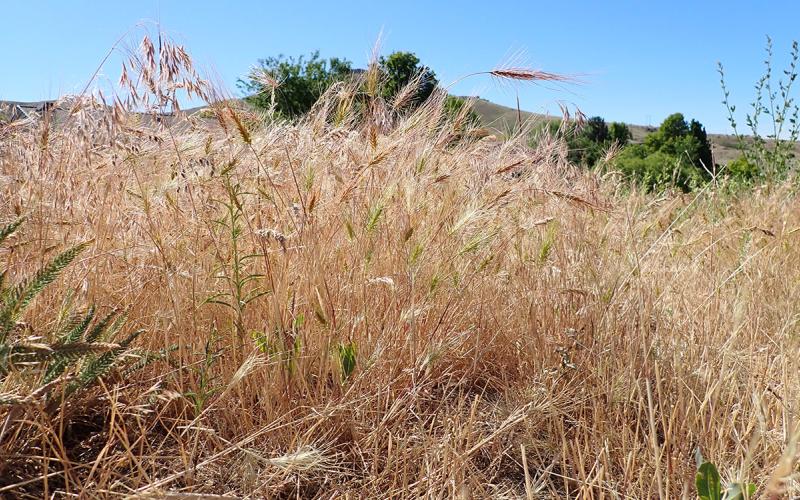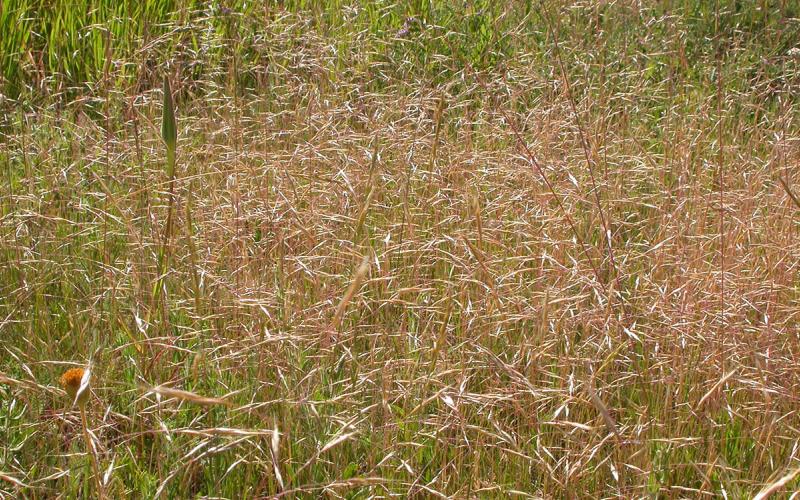Overview
Bulbous bluegrass (Poa bulbosa) is a cool-season perennial grass that can become problematic in rangelands. Bulbous bluegrass is less well-known than other species associated with rangeland invasion: cool-season annuals (including cheatgrass, Japanese brome, ventenata, and medusahead), or cool-season perennials (including crested wheatgrass, smooth brome, and Kentucky bluegrass). Bulbous bluegrass is unlike any other grass known, as it is the only reported grass that produces a bulb that the roots extend from each year (see the “Identification” section of this article for more information on its bulblets). Because bulbous bluegrass can become problematic, it is important to be aware of its impacts, identification, and management strategies. It is not listed as noxious in our neighboring states of Wyoming, Montana, or North Dakota, and it is not listed in South Dakota.
Why is it a problem?
Bulbous bluegrass is described as a perennial and annual, or a “perennial with annual tendencies.” Essentially, its life history is confusing, because it grows roots every season and has a short life span. It was used in the 1900s as a species for turf and pasture, and erosion control. It is readily found in disturbed areas, such as roadsides, abandoned fields, and rangelands (Figure 1).

As such, it tolerates a variety of environmental conditions that contribute to its invasiveness. It can be found in areas that range in annual precipitation from 12 to 40 inches. Further, it particularly can thrive in shallow soils that have dry summers, mild winters, and winter rainfall and soils that are wet during the winter and early spring. It specifically has been noted as an early successional species that is an early invader on these disturbed, shallow soils. Overall, bulbous bluegrass can capitalize on fall and early spring moisture, helping it out-compete desired perennial grasses. Its value as a forage is similar to that of cheatgrass. It has a very narrow window of grazing (green up to early May), allowing it to be grazed prior to going to seed, but it does not offer much forage value beyond that time period – both in nutritional quality and biomass production. If it is grazed early, wildlife (deer, elk, small mammals, birds) are particularly attracted to bulbous bluegrass, as the bulblets have high levels of starch and fat.
Bulbous Bluegrass Identification
- 6 to 24 inches tall.
- Egg-shaped, or plume-shaped panicle (which is a loose-branching cluster of flowers) that is 2 to 4 inches long (Figure 2).
- Reproduces asexually from bulblets. They sprout from the parent plant, forming basal buds. Bulblets germinate immediately and do not require dormancy, although some sources contradict this and state that bulblets need a dormancy of a few months to 2 years.
- Narrow leaves are 2 to 6 inches long and are flat or loosely rolled.
- Membranous ligule, about 3 millimeters long. No auricles are present (Figure 3).
- Limited root system – can easily pull it out of the ground, as few roots attach to the basal buds and those that do are approximately 0.5-4 inches long.
- It’s color is green, turning brown at senescence, which is shortly after the bulblets mature, typically in May (Figure 4).
- Associated species that you may see in the same areas as bulbous bluegrass: brome grasses, wheatgrasses, Kentucky bluegrass, and sagebrush to name a few species that we see in South Dakota.
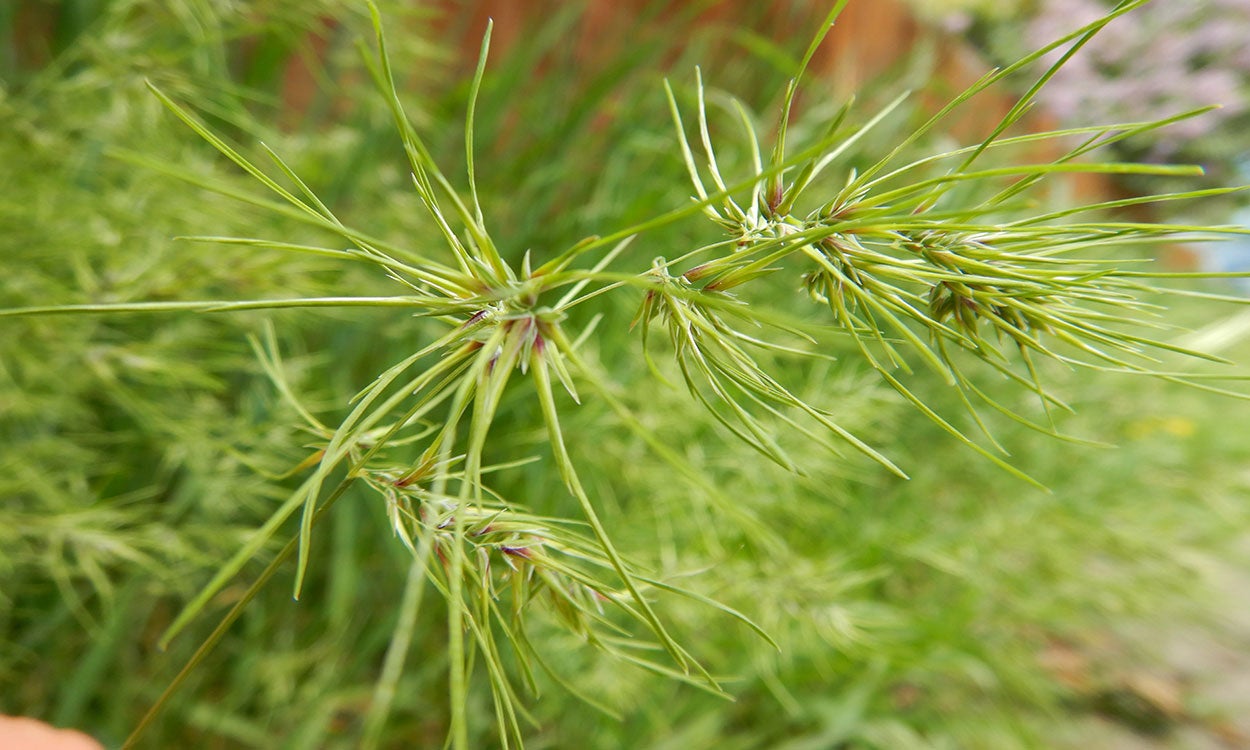
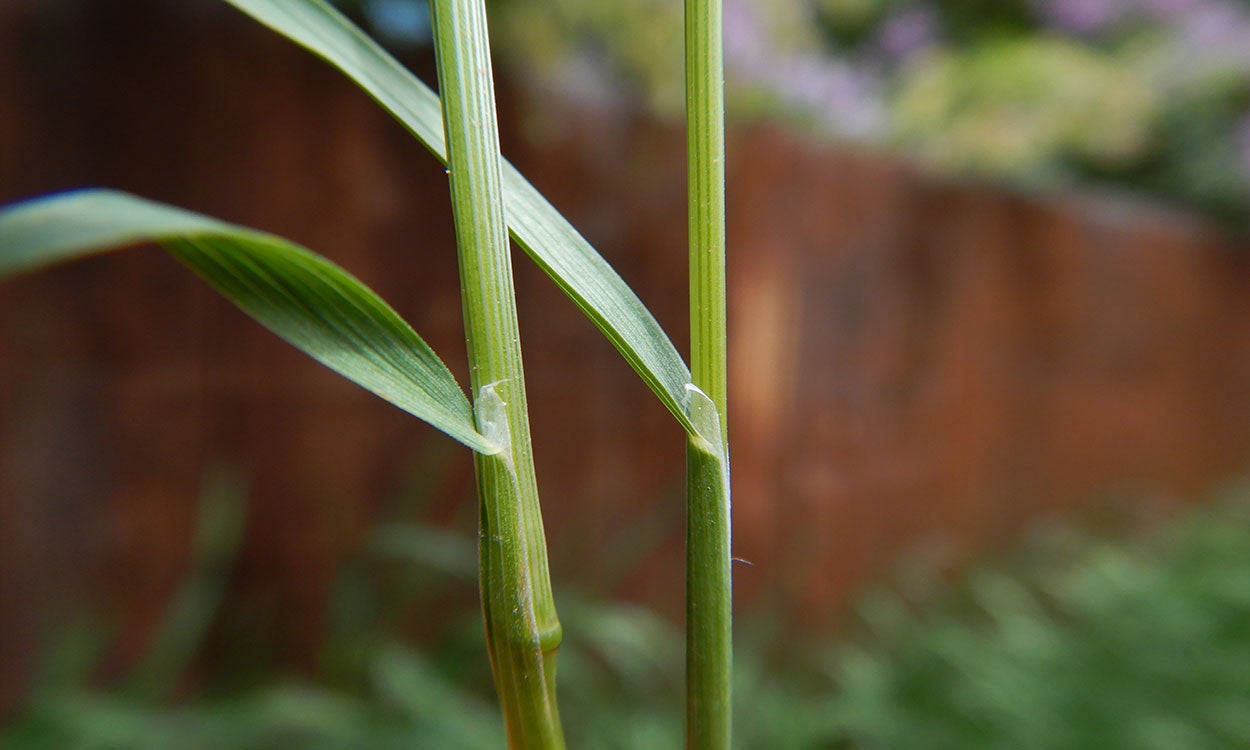
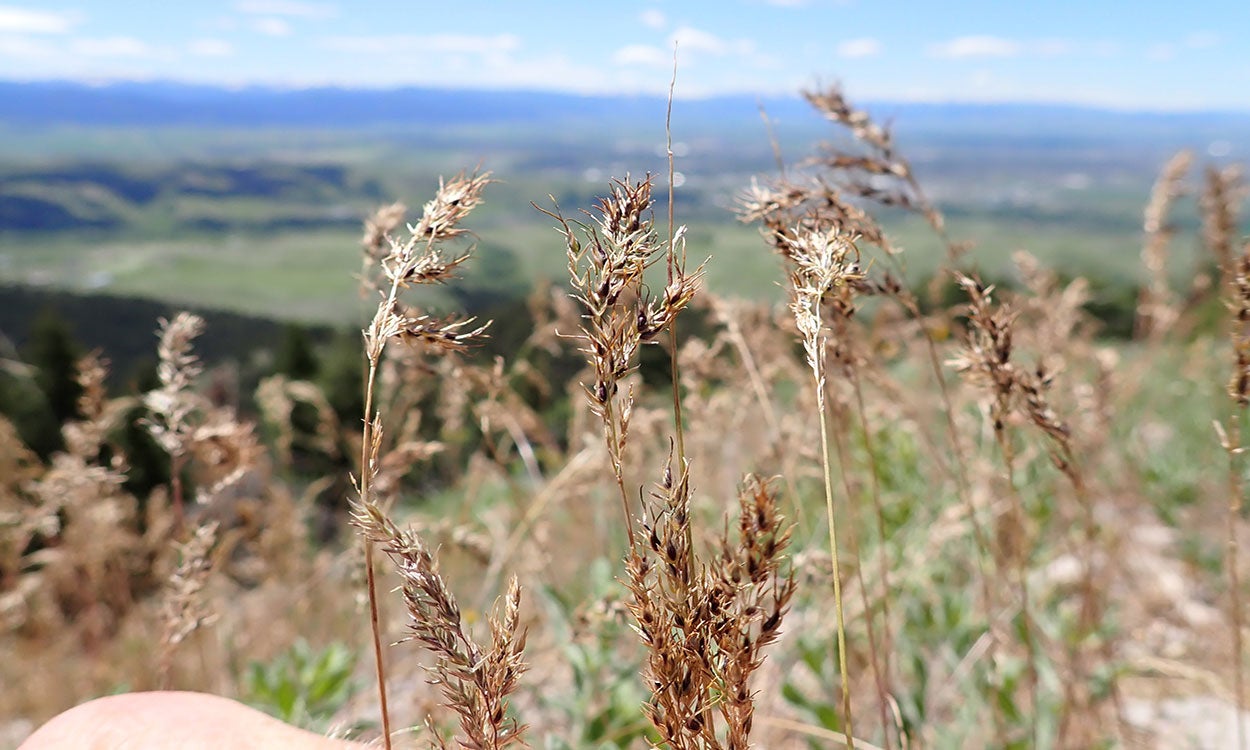
Management
If you notice bulbous bluegrass on your operation, take note of where it is and record the location so you can keep track if it begins to spread. As with many other non-desirable species, repeated, direct management strategies can have an impact over time. Burning is not recommended for bulbous bluegrass control, because it has no impact on the bulblets in the soil, so you wouldn’t be reducing the population. Mowing is also not considered an effective control method.
- Herbicide Application
There are limited herbicides available for bulbous bluegrass control: sulfometuron methyl, glyphosate, sulfosulfuron, or rimsulfuron. However, there can be unintended negative impacts on native plants if herbicide is applied incorrectly. Always consult the label prior to application for recommended rates, timing, etcetera. - Grazing
Early, intensive grazing on bulbous bluegrass can eventually dimmish the population. However, several years of this management strategy will be necessary. This would probably need to occur in March and April, prior to when the bulblets mature (early May), and be balanced with turning out in pastures that may be too wet that early in the season, risking compaction. Likewise, you will want to be careful to not overgraze immediately adjacent to an area that has a large bulbous bluegrass population, as that can allow it to spread into newly disturbed areas.
Conclusion
While bulbous bluegrass may not be in the front of producers’ minds as an invader to worry about, it does have the ability to decrease forage production and lacks palatability for most of the grazing season. Limiting disturbance, such as overgrazing, can reduce its ability to spread into new areas. Being aware of its identification, impacts, and management options can set producers up for success if it is found, helping to lessen the impacts of bulbous bluegrass.
Additional Resources
- Poa bulbosa. U.S. Department of Agriculture.
- Bulbous Bluegrass. Utah State Universty Extension.
- Bulbous Bluegrass. Montana.gov.
- Plant Guide - Bulbous Bluegrass. U.S. Department of Agriculture Natural Resources Conservation Service.
- Bulbous Bluegrass threatens diversity of wetland habitats. Wyoming Game and Fish Department.
